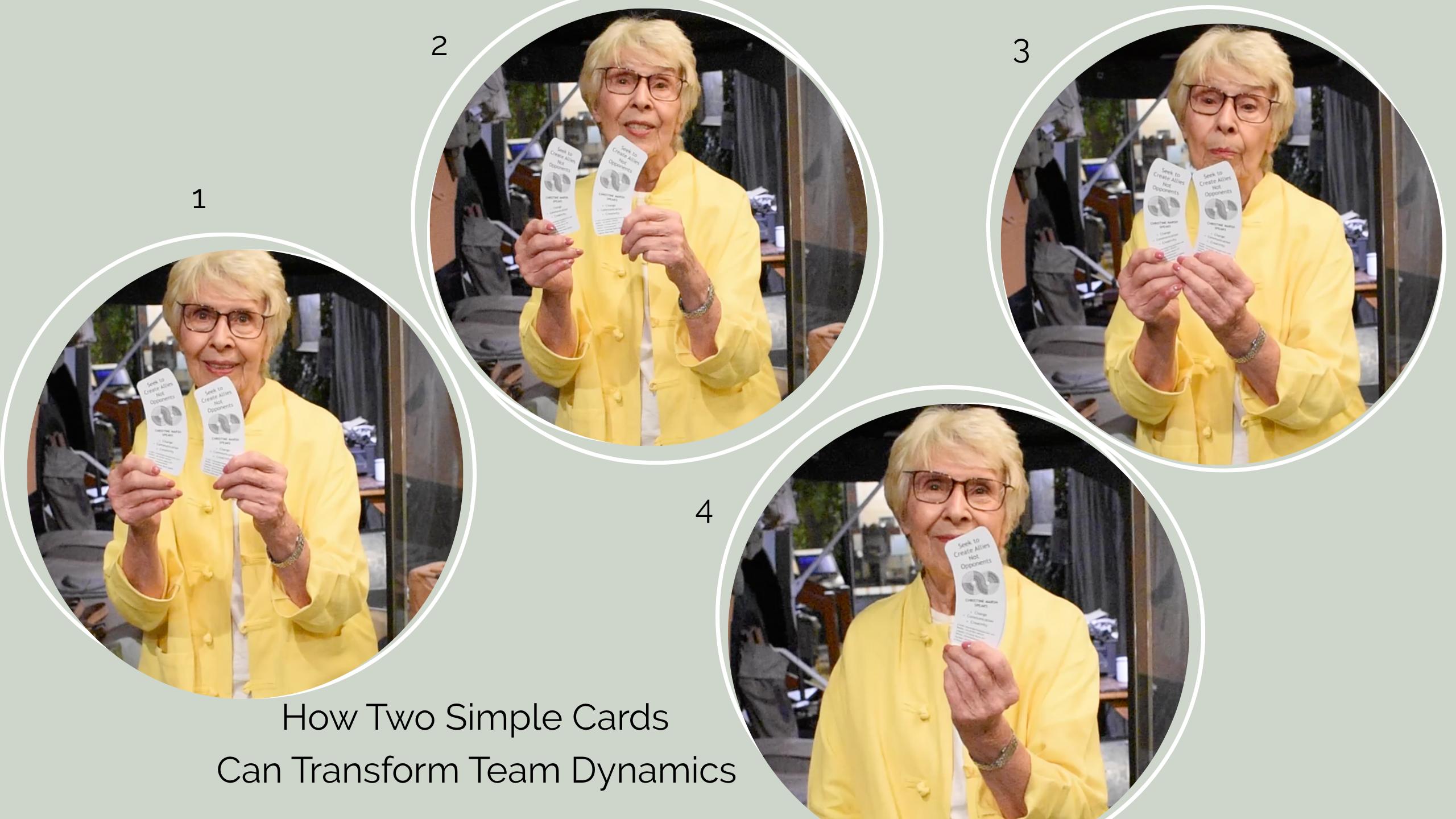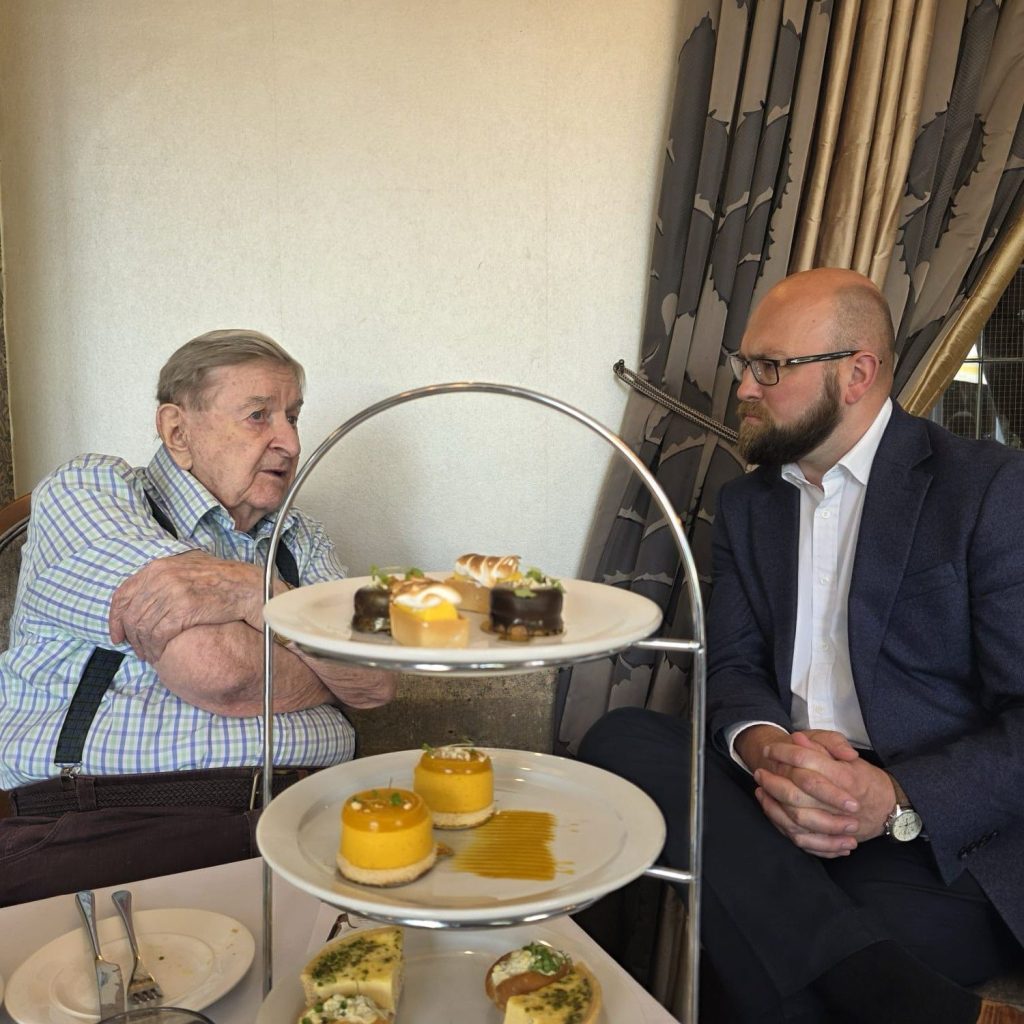
The Optical Illusion That Transforms Team Dynamics
Sometimes the most profound breakthroughs come from the simplest demonstrations.
Picture walking into a room where every face screams scepticism. Arms crossed, eyes rolling, body language that practically shouts, “This is a waste of my time.” As a change manager and facilitator, I’d encountered resistance before, but this leading car manufacturer’s workshop felt different. These weren’t just sceptical employees, they were brilliant research engineers who viewed an outsider talking about communication as nothing short of professional torture.
I had developed what I called the “How to Create Allies, Not Opponents” exercise specifically for moments like these. Using two specially designed cards featuring interlocked circles, I was about to demonstrate something that would shift their entire perspective, literally.
The Cards That Changed Everything
Each card displays two intertwined circles with varying line weights, thick lines representing louder voices, thinner lines representing quieter ones. The beauty of this design is its flexibility. Engineers see systems and processes. Managers see team dynamics. Everyone interprets the visual through their own professional lens, making the demonstration immediately relevant.
But here’s where it gets interesting. The cards are identical in size, though they certainly don’t appear that way when positioned differently.
The Four-Step Revelation
Step 1: The Initial Reality. When I held my card next to theirs, mine appeared noticeably smaller. “This is how you see me right now,” I explained. “The new person with less technical knowledge.” Heads nodded. This matched their perception perfectly.
Step 2: The Perspective Flip. I flipped both cards around in the same hands. Suddenly, my card appeared larger than theirs. The room stirred. Same cards, same hands, completely different visual outcome. I could see wheels turning in their analytical minds.
Step 3: Finding Equal Ground. Next, I rotated just my card while theirs remained stationary. Now, both appeared identical in size. “When we adjust our approach – not theirs, we can create the perception of equals, each bringing valuable expertise to the team.”
Step 4: The Ultimate Truth. Finally, I placed both cards together. The optical illusion dissolved, revealing what had been true all along: the cards were exactly the same size. A perfect balance. The underlying reality had never changed; only our perspective did.
Why This Works: The Psychology Behind the Magic
The demonstration taps into several powerful psychological principles that explain why it’s so effective with sceptical audiences:
Cognitive Dissonance Theory suggests that when our perceptions conflict with reality, we experience mental discomfort that motivates us to resolve the inconsistency. The engineers’ analytical minds couldn’t ignore what they were seeing – their assumptions were being challenged by visual evidence.
The Confirmation Bias Disruption was equally crucial. We naturally seek information that confirms our existing beliefs. But when faced with immediate, contradictory visual evidence, that bias gets temporarily suspended. The engineers couldn’t dismiss what they were witnessing with their own eyes.
Experiential Learning research shows that people retain information much more effectively when they discover it themselves rather than being told. Instead of lecturing about perspective and collaboration, I let them experience the revelation firsthand.
Most importantly, the demonstration bypassed their intellectual defences. Rather than challenging their expertise directly, which would have triggered defensive responses, it used a neutral visual metaphor that allowed them to draw their own conclusions about teamwork and perspective.
The Transformation Moment
The shift in the room was immediate and unmistakable. Arms uncrossed. Bodies leaned forward instead of back. The sceptical energy transformed into engaged curiosity. These brilliant minds grasped the deeper message instantly: perspective shapes everything, but the underlying value each person brings remains constant.
One engineer summed it up perfectly: “So it’s not about who knows more – it’s about how we position ourselves to work together.”
Exactly.
From Corporate Toolkit to Workshop Breakthrough
I’d developed this exercise during my corporate change management career, pulling it out whenever I sensed teams getting stuck in territorial thinking or when new members were being marginalised. It proved invaluable during mergers, cross-functional projects, and whenever diverse expertise was needed to unite around common goals.
The key was timing. This wasn’t an exercise for every situation; it was specifically designed for moments when perspective shifts were essential for progress. When teams were so focused on differences that they couldn’t see shared objectives. When “us versus them” thinking was blocking collaboration.
The Lasting Impact
That workshop marked the beginning of a seven-year partnership with the company. What started as a room full of resistance became a relationship built on genuine mutual respect. The engineers didn’t just tolerate the communication training – they embraced it, because they understood its value through their own discovery.
The optical illusion demonstration had accomplished something no amount of persuasion or credentials could have achieved: it showed rather than told, letting their own analytical minds reach the conclusion that collaboration enhances rather than threatens individual expertise.
Sometimes the most powerful communication tool isn’t what you say, it’s what you help people see for themselves.



